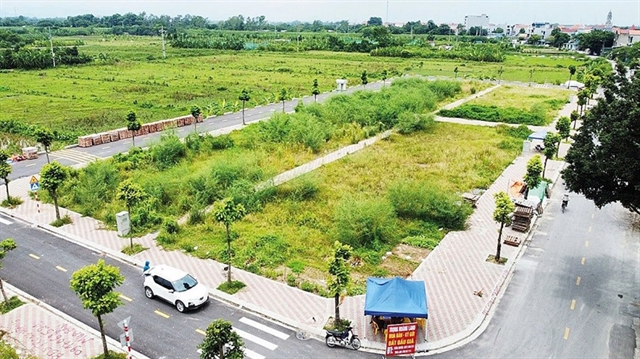 Talking Shop
Talking Shop

 |
| Heng Koon How, Head of Markets Strategy at Global Economics & Markets Research for United Overseas Bank Limited (UOB). — Photo courtesy of UOB |
Việt Nam’s contribution to ASEAN’s total GDP has grown significantly over the years, increasing to 12 per cent at present from under 6 per cent in 2000.
Việt Nam News spoke with Heng Koon How, Head of Markets Strategy at Global Economics & Markets Research for United Overseas Bank Limited (UOB), about the economic outlook for Việt Nam in 2024 and beyond.
Bồ Xuân Hiệp
How will Việt Nam’s economic recovery in the first half of 2024 influence its performance in the latter half of the year?
Việt Nam’s economy recovered in the first half of 2024, with GDP growth accelerating to 6.9 per cent in the second quarter, up from 5.8 per cent in the first quarter.
The significant growth can be attributed to a vigorous manufacturing sector, which expanded by 10 per cent year-on-year in the second quarter, alongside a services sector that experienced a 7.1 per cent increase.
Collectively, these sectors account for around three-quarters of the country’s GDP.
In addition, external trade has rebounded, with exports and imports rising by 14 per cent and 16.6 per cent, respectively.
Despite existing risks, including geopolitical tensions and uncertainties, we maintain a positive growth forecast of 6 per cent for 2024, up from 5 per cent last year, positioning Việt Nam among the fastest-growing economies in the ASEAN region.
What are the primary demographic and macroeconomic trends that bolster Việt Nam’s long-term economic outlook?
Việt Nam’s robust economic growth is driven by favourable demographic and macroeconomic trends.
Demographically, Việt Nam is characterised by a rapidly expanding middle class and ranks third in population size within ASEAN, with an estimated 100 million inhabitants.
This demographic advantage is expected to enhance consumer spending in the coming years as the population continues to grow and accumulate wealth.
Việt Nam is successfully transitioning from low-cost manufacturing to higher value-added technologies while simultaneously promoting significant development in the services, retail, and tourism sectors.
These strong long-term fundamentals have led to a remarkable increase in Việt Nam’s share of ASEAN’s GDP, which has nearly doubled from below 6 per cent in 2000 to 12 per cent today.
How can Việt Nam leverage the robust trade and foreign direct investment (FDI) growth within ASEAN to enhance its economic development?
As a key member of ASEAN, Việt Nam is strategically positioned to capitalise on the significant advancements in both trade and FDI throughout the region.
In the context of escalating global trade disputes and rising tariffs, ASEAN, including Việt Nam, offers a distinct advantage through its robust and expanding regional trade opportunities.
The solid trade foundation of ASEAN is supported by multiple long-standing Free Trade Agreements (FTAs) with major partners, including China, Hong Kong (China), Japan, South Korea, India, and Australia and New Zealand.
The ten ASEAN nations are integral to the Regional Comprehensive Economic Partnership (RCEP), which encompasses fifteen member countries.
This framework positions ASEAN as the central hub of the RCEP, facilitating trade connections with North Asia, including China, Japan, and South Korea, as well as with Australia and New Zealand.
These fifteen RCEP nations significantly enhance ASEAN’s trade and economic influence, accounting for nearly 30 per cent of global GDP, population, and trade.
ASEAN is positioned as the world’s second-largest FDI destination (only after the US).
FDI inflows into ASEAN are projected to grow significantly, reaching $370 billion by 2030.
What are the key challenges facing Việt Nam and ASEAN economies in the near future?
As we look toward the second half of this year and into the next, ASEAN faces three primary challenges.
First, China’s uneven economic recovery poses risks. Weak retail sales and a slowdown in manufacturing are anticipated to reduce China’s growth from 5 per cent in the first half to 4.8 per cent in the second half.
While this may decrease demand for ASEAN exports, it could also lead to increased Chinese investment in the region as businesses seek new opportunities.
Second, leadership changes in countries such as Indonesia, Thailand, and Việt Nam may introduce policy risks that could affect fiscal and economic strategies, creating uncertainty for investors.
Lastly, the upcoming US presidential election could escalate trade tensions with China, potentially resulting in higher tariffs that may impact ASEAN economies as well.
What should investors anticipate regarding the monetary policy of the State Bank of Vietnam in light of the gradual recovery of the Vietnamese đồng (VNĐ)?
To support economic growth, the State Bank of Vietnam is expected to adopt a cautious approach, maintaining its benchmark refinancing rate at 4.5 per cent for the foreseeable future.
The focus will likely be on implementing measures that promote increased loan growth and bolster credit expansion within the economy.
Concerning the VNĐ, supported by economic recovery projected throughout 2024 and a globally anticipated weakening of the US dollar (USD), the VNĐ has begun to appreciate, moving towards the stronger side of 25,000 against the USD.
Looking ahead, it is expected that the VNĐ will gradually strengthen to approximately 24,100 against the USD by the second quarter of 2025. — VNS


.jpg)

